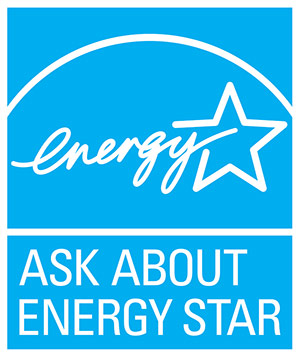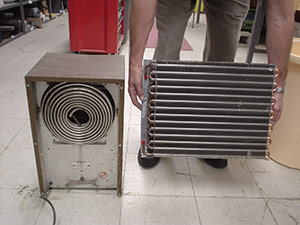In Business Since |[license number]
In Business Since |[license number]



Since its launch in 1992, the renowned ENERGY STAR® program has grown to establish specifications for all kinds of products, from computers and electronic equipment to lighting, appliances, new homes, and more. But what does an ENERGY STAR® certification mean when you're buying a dehumidifier?
Dehumidifiers are designed to remove moisture from the air by blowing air over aluminum coils that are cooled with refrigerant. Cool air can't hold as much moisture as warmer air. When humid air contacts the cold coils in a dehumidifier, it gives up moisture in the form of condensation that the machine will collect.

Coil comparison. The cooling coil assembly used in a SaniDry™ dehumidifier resembles a car radiator and provides an immense surface area for condensation production to take place. In contrast, the compact coil on a cheap model is significantly undersized for basement dehumidification requirements.
Dehumidifiers with a capacity of 75 PPD or less must have at least a 1.85 EF to earn the ENERGY STAR® designation. Models with 75-185 PPD capacity must be 2.8 EF or higher. These minimum efficiency ratings are at least 15% better than those for standard dehumidifiers.
In addition to meeting minimum EF requirements, ENERGY STAR® dehumidifiers must be equipped with an adjustable humidistat control (which allows you to set your target humidity level) or be operable using a remote humidistat.
One reason that larger dehumidifiers can operate more efficiently than smaller units has to do with the size and quality of their internal components. For example, the compact circular cooling coils on a cheap, room-size dehumidifier present a much smaller cooling surface area than the radiator-like cooling coils used in a SaniDry™ dehumidifier (see photo). As a result, the smaller unit's fan must blow a huge volume of air through the machine to match the dehumidification capacity of the larger unit. This translates to more electricity consumption and a shorter lifespan of the product. For reasons like these, it's important to learn about dehumidification requirements before committing to purchasing a dehumidifier for your home.